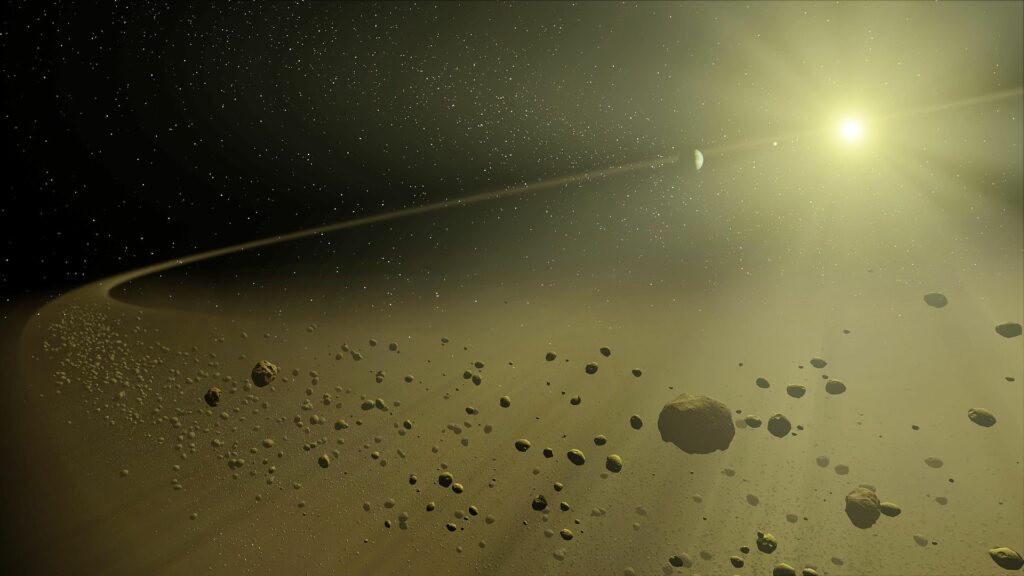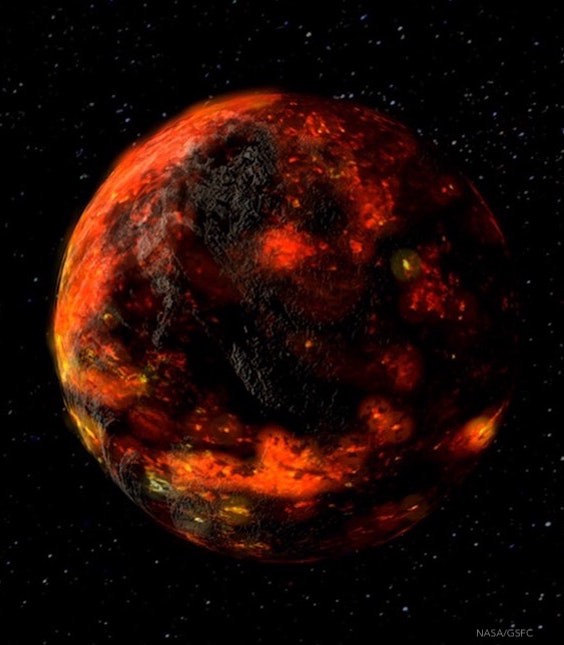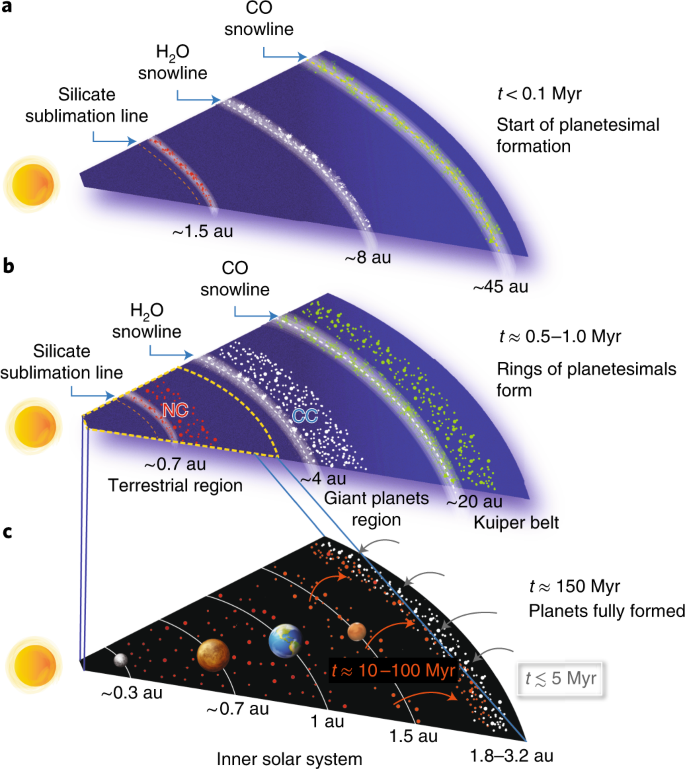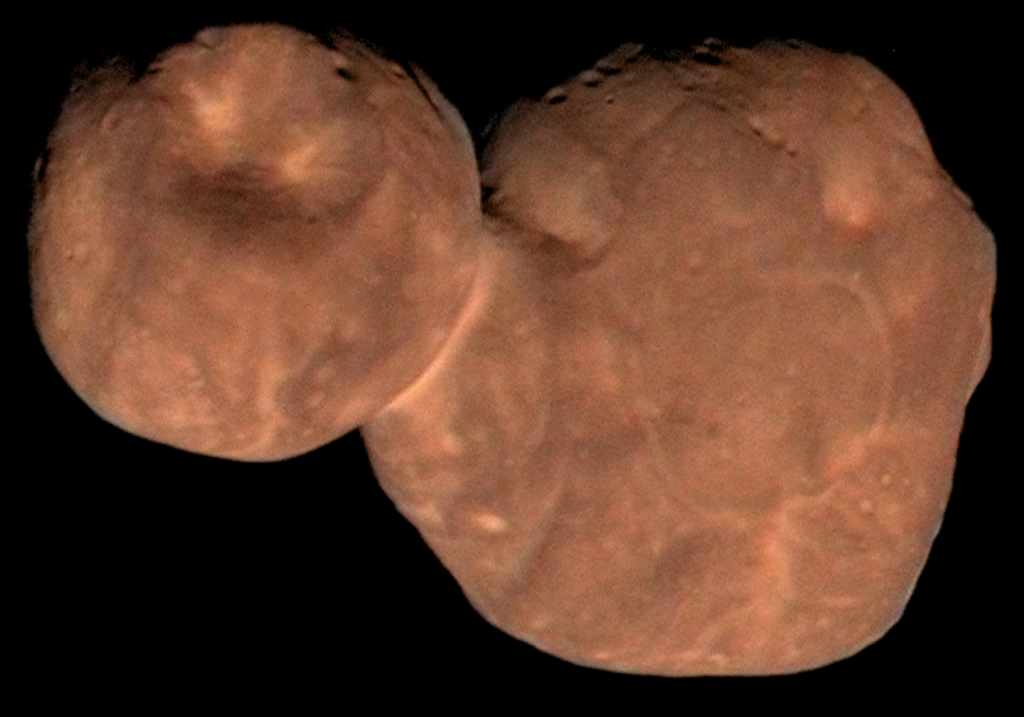Planetesimals are small celestial bodies that existed at the beginning of the history of the Solar System. Scientists believe that most of them later became material for the creation of planets or were thrown far into space. But some of them could survive to this day.

How did planetesimals come into astronomy?
The word “planetesimal” was formed as a result of combining the words “planet” and “infinitesimal” (infinitely small). It was first used in scientific literature by Thomas Chamberlain and Forest Moulton. In 1900, they proposed a model of the formation of the solar system, according to which another star once passed close to our star, and its tidal forces caused the formation of two spiral arms.
These arms broke away from the Sun and began to orbit. Over time, they coalesced to form large planets and many small bodies, which were called “planetesimals”. It took scientists forty years to prove that the formation of planets according to the Chamberlain-Moulton model is impossible, but they liked the idea of dust clumping into small bodies so much that this new word was introduced into scientific vocabulary.
Physics of planetesimals
Modern planetology defines a planetesimal as a celestial body formed in orbit around a young star as a result of the coalescence of dust particles. The latter are mostly pieces of silicate rocks or ice crystals formed as a result of a supernova explosion.
At the initial stage of the formation of planetesimals, the main role is played by Brownian motion and turbulence. They are born as small vortices in the protoplanetary disk, which compact very slowly. At this stage, the clumping of particles is barely noticeable and has a random character.
As more particles are involved in these turbulences, their total mass increases. As soon as the size of a planetesimal reaches a kilometer, the gravitational forces become powerful enough to form a solid but loose body, while dust continues to fall on its surface.

Some of the planetesimals eventually disperse, some grow to the size of a protoplanet, and the process of differentiation begins in its bowels, when heavier elements form the core, and lighter ones form the crust. Also, many collisions occur at this stage, which lead to the rapid growth of the celestial bodies.
Evolution of the early solar system

Many events that took place in the early solar system are associated with planetesimals. For example, scientists recently suggested that the dwarf planet Ceres could have formed from planetesimals beyond the orbit of Saturn and then migrated closer to the Sun.
A hypothetical celestial body called Theia, which presumably collided with the Earth causing the formation of the Moon, could also be a surviving planetesimal. About 3.8 billion years ago, the last series of large-scale collisions of large objects took place, known as the Late Heavy Bombardment. It is believed that since then, almost no planetesimals have remained, at least in the inner Solar System.
Candidates for planetesimals
Despite this, planetesimals might survive somewhere far away from the Sun. Scientists would really like to look at them, since they retain the chemical composition of the early solar system.

Many objects are considered candidates for planetesimals. These include, in particular, the Kuiperoid Arrokoth, explored by the New Horizons automatic probe in early 2019 after its rendezvous with Pluto. This object has dimensions of 31×19×14 km. It appears to be molded from two separate pieces resembling snowballs. According to scientists, this is exactly how the process of fusion of planetesimals should be.
Relics of the early Solar System are also being sought among asteroids in the Main Belt. For example, candidates for the planetesimal are Vesta and Antiope. But to clarify this hypothesis, it is necessary to study their chemical composition in detail.
You can learn more about outer space by taking a look at our Space Knowledge section.
